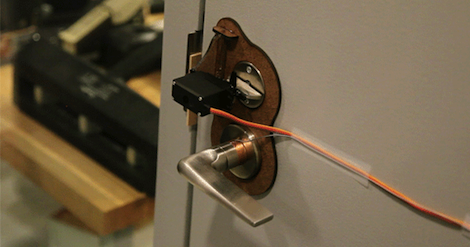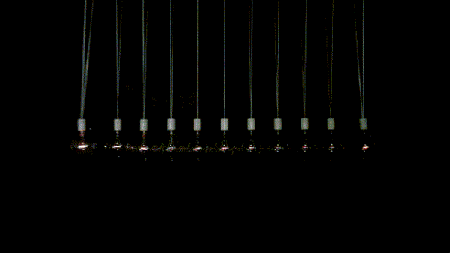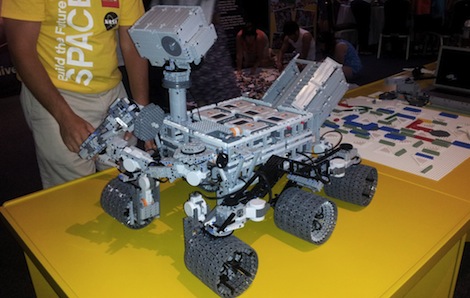
[Rob Hemsley] sent in an update to an RFID-based door lock. Previously, if you wanted to enter the MIT media lab, a RFID-enabled card was required to get in. Now, with [Rob]’s update, you only need to tap the door handle in a ‘secret’ pattern.
The earlier RFID-enabled build used about $80 in hardware, not a very economical solution. The new touch-based solution only uses an Arduino and servo, making the build much cheaper.
The touch sensitive lock uses the CapSense Arduino library. By turning the door handle into a touch sensor, [Rob] allowed a secret code to be saved in the EEPROM. Repeating this sequence when the door is locked sends power to the servo, unlocking the door.
A very cool build that’s also a little more secure than the traditional, audible knock lock. Check out the video after the break.
Continue reading “Knock Lock Balks Knock, Uses CapSense Without Shock”
















